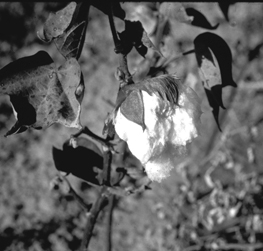|
|

What happens to farming when the water runs out? Researchers, predominately
from Texas Tech University are working to address this question. They
are looking into alternatives to irrigated crops, including an integrated
crop/forage/beef cattle system.
The research being conducted at the agricultural science research farm
near New Deal includes a number of people from different universities,
departments and agencies. Dr. Vivien Allen, Thornton Distinguished chair
in the department of plant and soil sciences, is heading up the project.
“Crop production in the Texas High Plains is about a $2.3 billion
industry per year,” Allen said, “but about 70 percent of that
is supported from irrigated agriculture.”
The water comes mostly from the Ogallala Aquifer, which has supported
the production of crops for more than 100 years. As many High Plains agricultural
workers know, water from the aquifer is a resource that is becoming scarce,
especially in recent years.
“Today our problem is that our water supplies are running out,”
Allen said.
According to the High Plains Underground Water Conservation District
No. 1, the water level has dropped an average of 1.13 feet per year in
the last 10 years in the 15 counties surrounding Lubbock. Researchers
say this will make traditional one-crop systems unsustainable. Research
conducted so far has established that integrated cotton, forage and beef
cattle systems improve profitability and reduce water use by 20 percent.
“We’re looking for ways in which we can design agricultural
systems that will use less water and still maintain the productivity and
economic viability for this region,” Allen said.
This project began in 1997 to compare the two systems. Researchers looked
at the conventional irrigated cotton system using best management practices.
They compared the conventional system to an alternative irrigated crop-livestock
system for production of both cotton and feedlot-ready stocker cattle.
In the alternative system being tested, 50 percent of the land area
is established in permanent pasture. The remaining half is divided into
two equal parts, where the rotation of rye, cotton and wheat takes place.
Cotton is produced in each of the two paddocks, in alternating years,
so that in any one year cotton is planted in only one of the paddocks.
The cattle graze the small grains in sequence.
Producer cooperatives provide on-farm testing and demonstrations of
both the livestock and cotton systems.
Allen said the co-op producers, one of which is in Lockney, are important
to the study of the systems.
“These systems won’t work if the locations change,” Allen
said. “A system is absolutely unique to its specific place, because
it combines all factors, so the minute you move it, the factors change.”
The alternative system is designed over a period of time to use less
water and make better use of land.
“This region is extremely important to agriculture, yet extremely
challenged,” Allen said. “Water is diminishing and we need to
secure the future of our resources.”
This research foreshadows what could be a breakthrough for High Plains
farmers. Allen and fellow researcher, Matt Baker, chairman of the department
of agricultural education and communications at Tech, agree that Lubbock
must maintain a strong agricultural base in order to thrive.
“Lubbock is dependent on a healthy agricultural economy,”
Baker said. “If we don’t have that, we don’t have anything.”
Allen says that it looks like it is possible to design a system for
this region that will be more sustainable and compatible with natural
resource utilization.
She is quick to caution, however, that there is still much work to be
done and one system will not solve everyone’s problems.
“We’re going to have to look at alternative approaches and
find ways that we can make sustainable agriculture a possibility, but
within the use of natural resources,” Allen said.
The ultimate goal of the research is to get to the point where production
agriculture can be done without the use of irrigation.
“We would like to get to the point where we can take water out
of our agricultural production system,” Allen said. “That looks
like it may be a possibility, but it is going to take a lot of research.”
Both Allen and Baker say it’s important to make the general public
aware of water conservation strategies.
“Without education, research isn’t worth anything,” Baker
said.
|
|